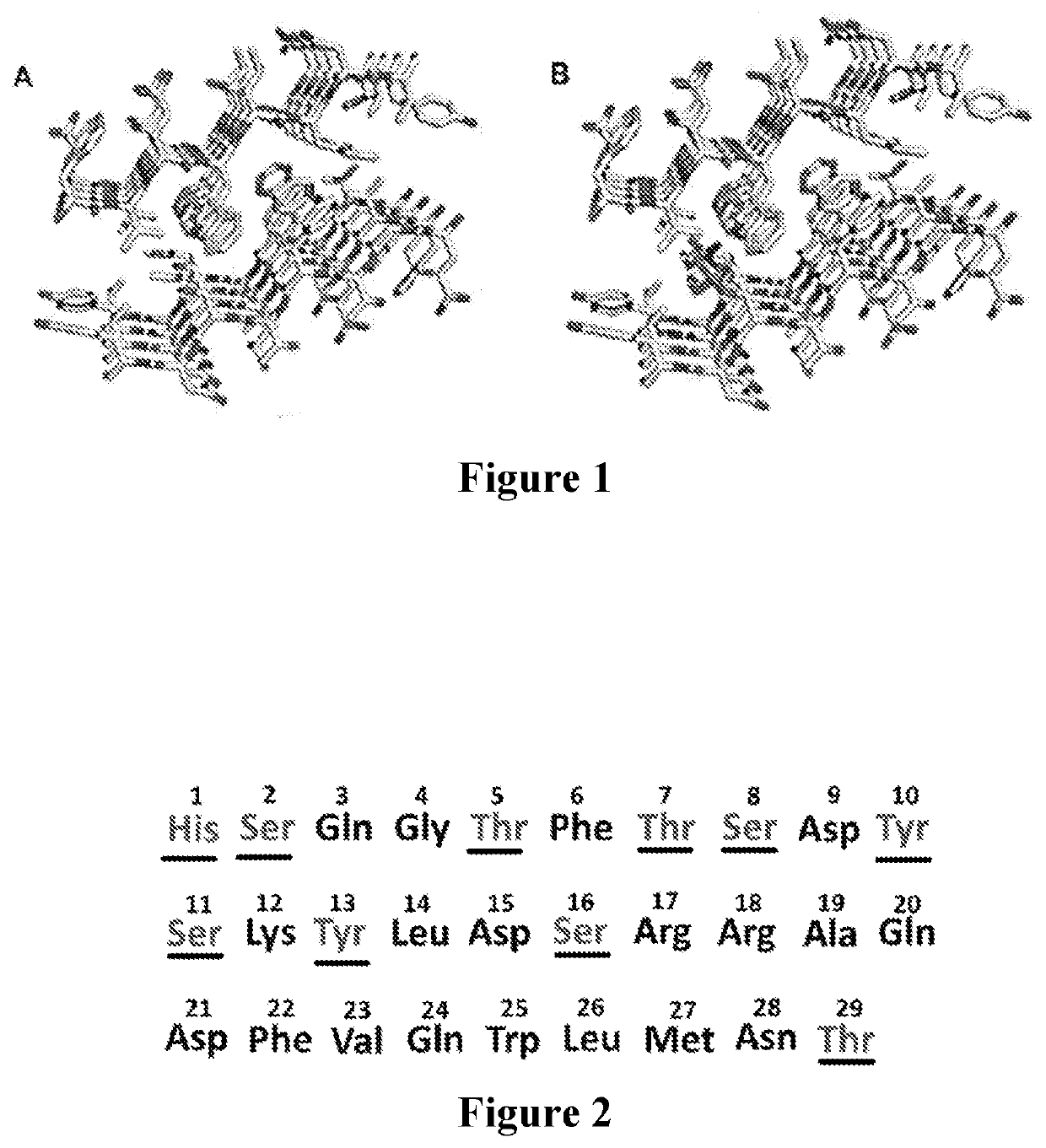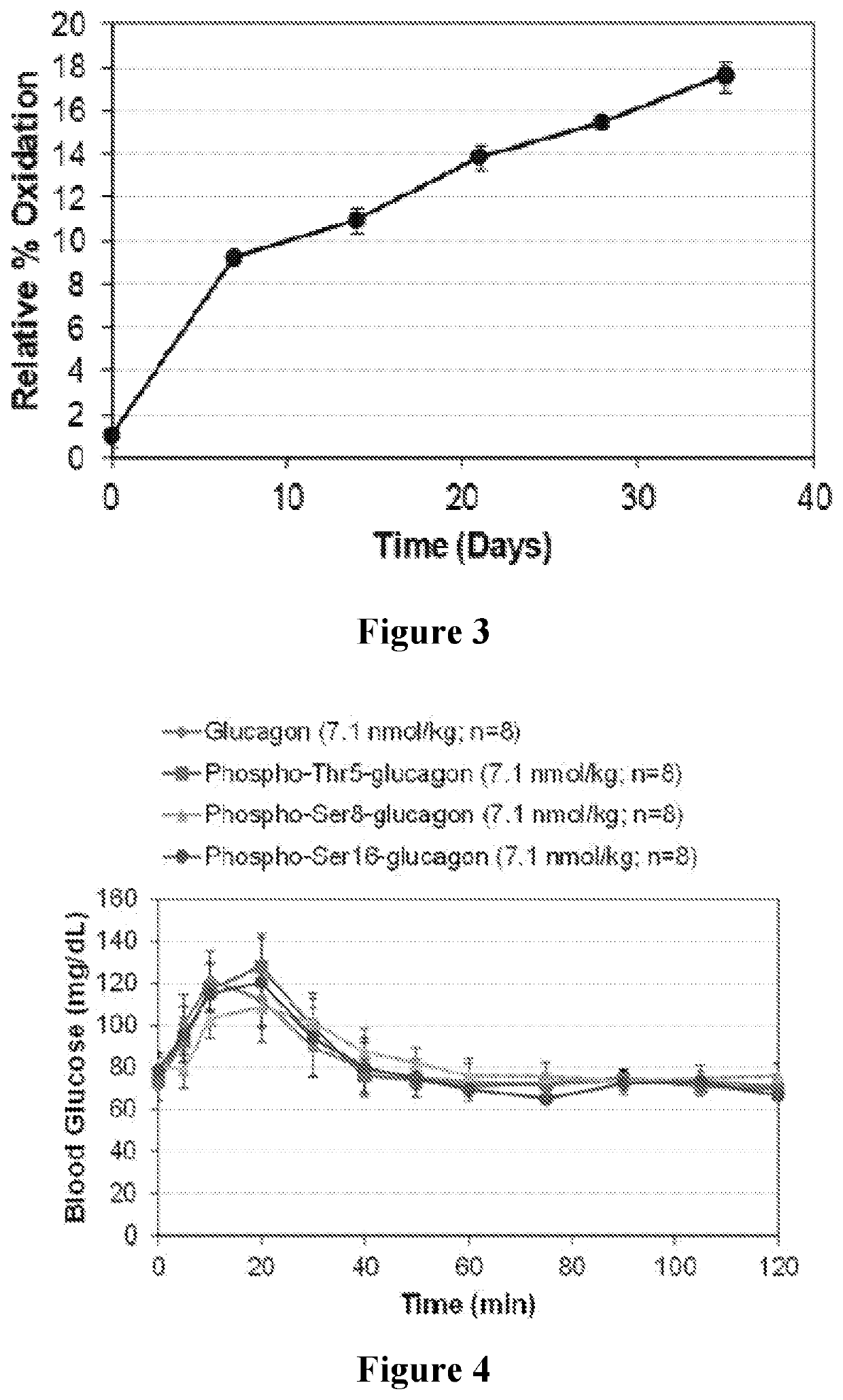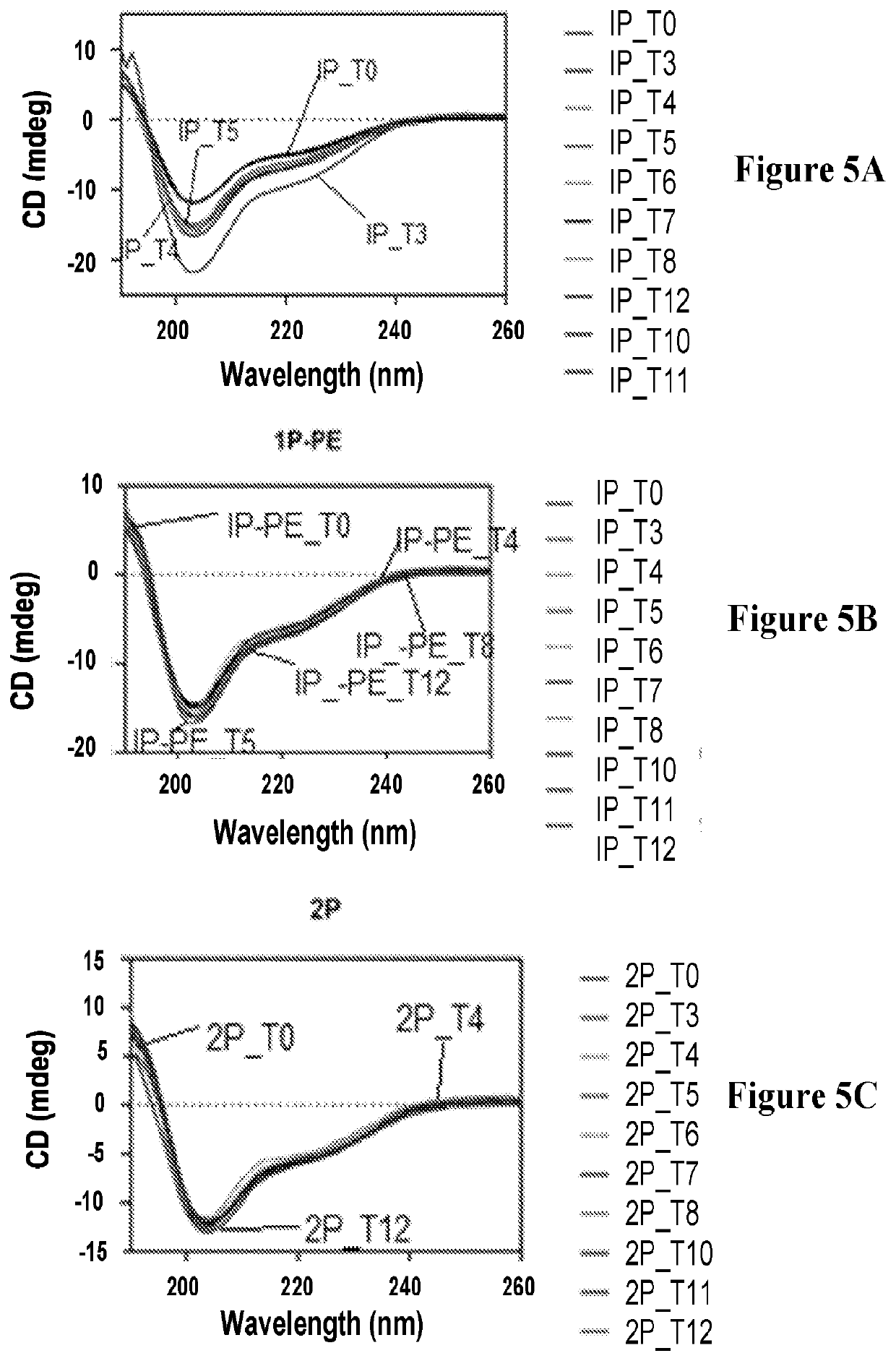Modified glucagon molecues and formulations with oxidation resistance and methods and kits of employing the same
a technology of oxidation resistance and glucagon, which is applied in the direction of drug compositions, peptide/protein ingredients, metabolic disorders, etc., can solve the problems of conventional solubility and stability, and achieve the effects of promoting oxidative resistance, inhibiting fibril formation, and promoting solubility of the molecul
- Summary
- Abstract
- Description
- Claims
- Application Information
AI Technical Summary
Benefits of technology
Problems solved by technology
Method used
Image
Examples
example 1
Solubility of Phosphoglucagons
[0083]An ideal glucagon for hypoglycemic rescue would have adequate solubility in aqueous solution at a neutral pH. The approximate solubilities of native human glucagon and its phosphoglucagon analogs were measured at room temperature by the drop-wise addition of 50 mM phosphate buffer (pH 7.4) or 50 mM phosphate-buffered saline (pH 7.4) to a known amount of peptide until complete dissolution resulted (as confirmed by visual observation).
[0084]More specifically, for turbidity measurements, 100 μL of filtered stability samples were transferred to a 96-well microtiter plate (in triplicate), final volume was made up to 200 μL with 50 mM sodium phosphate (pH 7.4), and UV absorbance at 405 nm and 280 nm were used to calculate an aggregation index. Turbidity is reported as the time in days required to increase turbidity by 50% of the initial value. For fluorescence measurements, glucagon and phosphoglucagon solutions were prepared at 1 mg / mL in either 3.2 mM...
example 2
Stability of Phosphoglucagons
[0086]In addition to solubility at a neutral pH, the medical impact and commercial viability of phosphoglucagon depend on its stability in solution. Phospho-Thr5-, phospho-Thr7-, and phospho-Ser8-glucagon were selected for stability studies, involving assessments of physical stability, structural stability, and chemical stability, as they had the greatest solubility of the phosphoglucagon analogs. For stability studies, phosphoglucagon solution samples were prepared at 1 mg / mL in 50 mM sodium phosphate (pH 7.4), centrifuged at 14,000 rpm for 5 min, and filtered through 0.1 μm filters to remove any insoluble material. The samples were aliquoted as 300 μl into 2 mL vials, sealed under nitrogen gas and stored in a dark place at room temperature for 35 days. Vials were withdrawn at regular intervals to monitor physical stability using turbidity measurements; structural stability by far-UV circular dichroism (CD) spectroscopy and fluorescence measurements; an...
example 3
Dephosphorylation of Phosphoglucagons
[0089]To evaluate whether glucagon phosphorylation can be reversed by exposure to phosphatase enzymes, the kinetics of de-phosphorylation was examined using phospho-Thr5- and phospho-Ser8-glucagon. For this study, a colorimetric phosphatase assay (BIOMOL) was carried out, in which free phosphate reacts with the BIOMOL green reagent to produce a color change (yellow to green) that is directly proportional to the free phosphate concentration. Specifically, 2 nmol of analogues were separately incubated with 0.009 units of bovine alkaline phosphatase in assay buffer (50 mM Tris, pH 7.4) to a final volume of 50 μL. The reaction was carried out in a 96-well crystal-clear microtiter plate over 5-480 min at 37° C. The reaction was quenched by adding 100 μL of BIOMOL green reagent (malachite green) and read at 620 nm. Samples with known phosphate concentrations were used to obtain a phosphate standard curve.
TABLE 2Summary of dephosphorylation study.Dephos...
PUM
| Property | Measurement | Unit |
|---|---|---|
| concentration | aaaaa | aaaaa |
| concentration | aaaaa | aaaaa |
| concentration | aaaaa | aaaaa |
Abstract
Description
Claims
Application Information
 Login to View More
Login to View More - R&D
- Intellectual Property
- Life Sciences
- Materials
- Tech Scout
- Unparalleled Data Quality
- Higher Quality Content
- 60% Fewer Hallucinations
Browse by: Latest US Patents, China's latest patents, Technical Efficacy Thesaurus, Application Domain, Technology Topic, Popular Technical Reports.
© 2025 PatSnap. All rights reserved.Legal|Privacy policy|Modern Slavery Act Transparency Statement|Sitemap|About US| Contact US: help@patsnap.com



